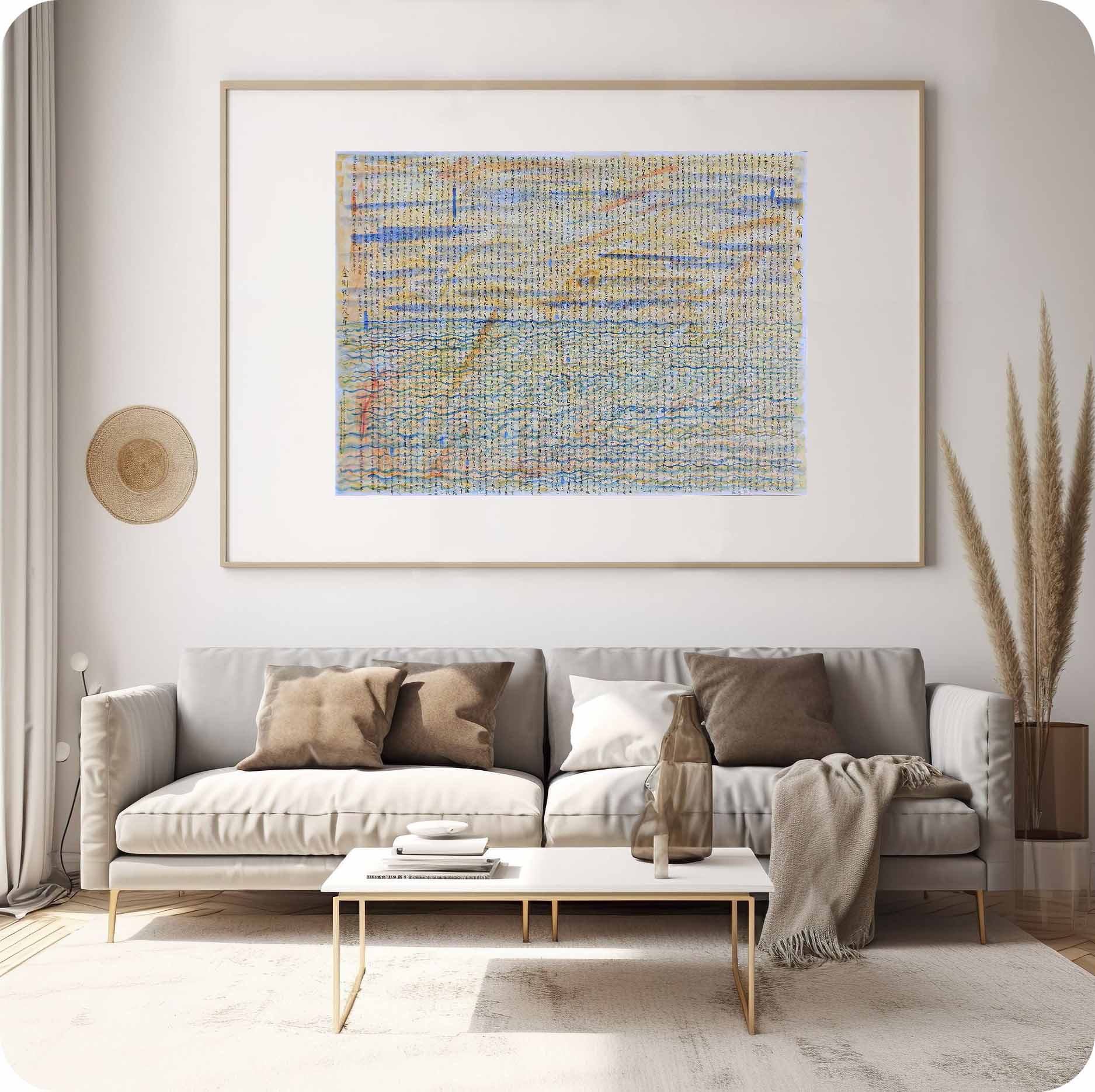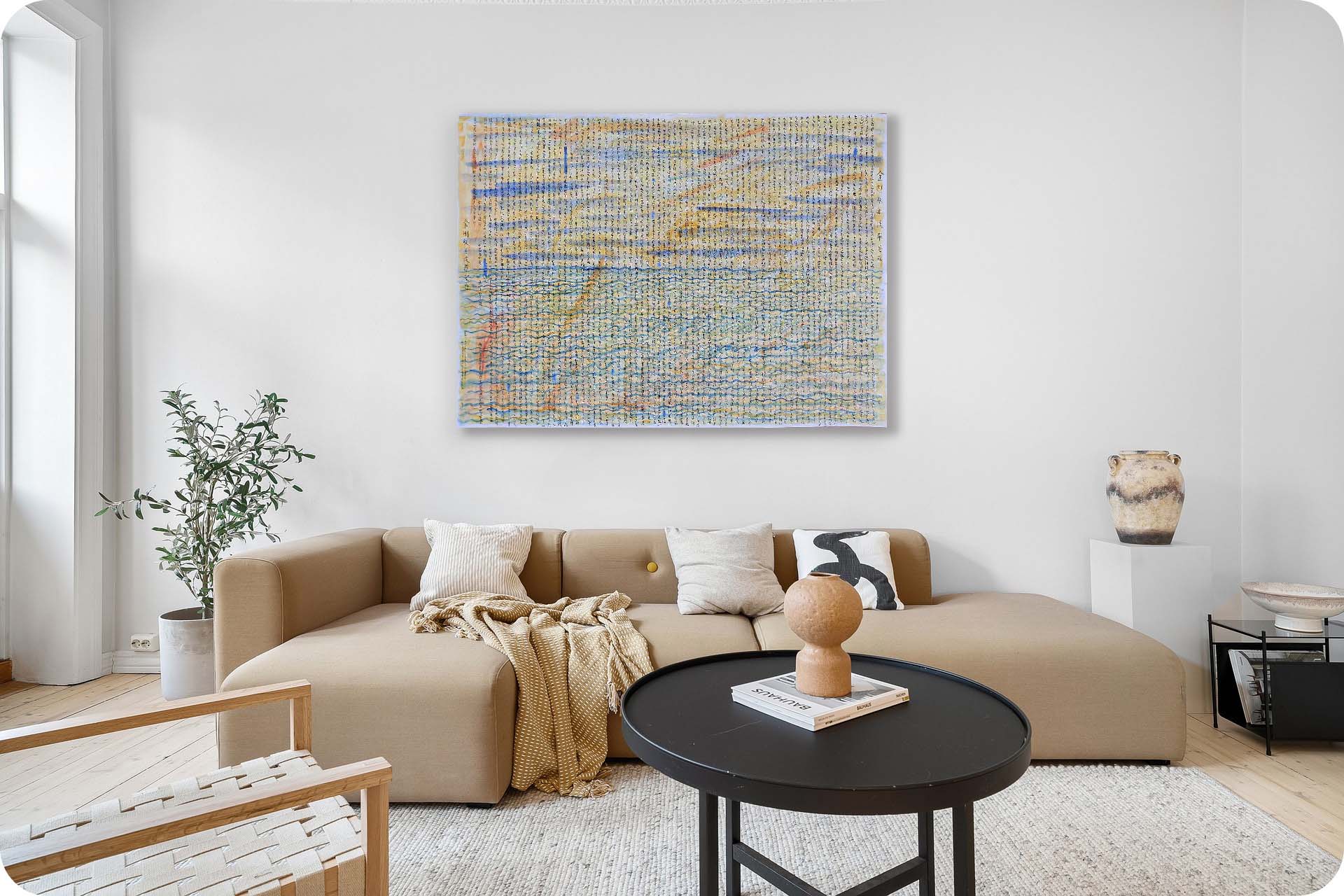This painting was created in 2022. This year, the painting style changed sharply, from the usual low and harmonious gray colors to conflicting bright colors. At the same time, it raised a big question mark about life.
Copying scriptures, chanting scriptures, and burning scriptures. This is also one of the ways I love this world. If you are willing to understand it, you will find that this is one of the most effective ways of "love".
Inches: 30.7 x 42.5 in
Size without the frame: 78 x 108 cm
Country: China
Date: 2022
Materials: Oil paint on paper
Condition: well preserved
Creative themes and style | My works revolve around the creative concept of "The land of humanity, People on the land". The people in the painting are people in nature, and the lines, shapes, and colors are close to nature. The nature in the painting is nature in the eyes of humans, existing in interaction with humans.I don’t pursue a series of works with a fixed and continuous style. I hope that the style of the pictures will synchronize with the changes in my life and always remain oscillating. The performance of the work must be in sync with the development of one's own life in order to be Sincere and powerful. Ideas are later.
An Interview with Artist Philo by Artphiloso Gallery
If you would like to collect this artwork or know more about the artist, please contact us.
watercolor landscape painting,self portrait drawing,abstract acrylic painting,colorful abstract art.


The painting employs a transparent layering technique: scriptures cascade vertically in the background, while blue ripple-like lines overlay the surface. This overlap generates the illusion that the texts are drifting on the sea, enhancing the sense of fluidity and mystery.
Blue represents the depth and infinity of the ocean, while orange-yellow conveys the warmth and radiance of the sky. Their interplay evokes a transition between dawn and dusk, suggesting that the scriptures are continuously “recited” in the eternal cycle of light and sea.
Viewed up close, each line of scripture reveals subtle variations in brushwork, echoing the rippling of water. In the lower half, horizontal wave patterns intersect with the vertical scriptures, forming a unique textile-like grid, reminiscent of woven silk.
Yes. The work transcends the boundaries of calligraphy and painting, treating text as a visual form and integrating it with maritime imagery. It exemplifies contemporary ink painting, making it a compelling acquisition for collectors seeking a balance between cultural depth and modern aesthetics.
It continues the literati tradition of uniting poetry, calligraphy, and painting, while reinterpreting it through modern color language. Its value lies in bridging scholarly resonance and cross-media innovation, making it significant for both literati collections and curatorial contexts of themed exhibitions.
A: Click here to view ARTPHILOSO's Guide for Collectors.
More paintings from this series:
There are scriptures on the sea 2
There are scriptures on the sea 3
